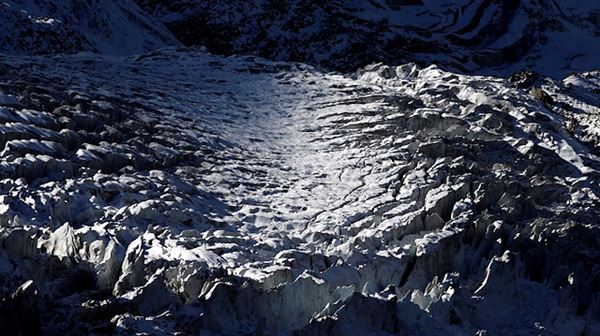With water resources playing a key role in the ecosystem, the loss of fast-melting glaciers is leading to political instability, according to a climat
With water resources playing a key role in the ecosystem, the loss of fast-melting glaciers is leading to political instability, according to a climatologist.
“Water resources impact drinking water supplies, agriculture, tourism and ecosystems, and you can imagine political instability with the loss of glaciers in key regions throughout the world,” Julienne Stroeve, a professor at the U.K.’s University College London, told Anadolu Agency.
Stroeve, an expert on atmosphere-sea ice interactions and Arctic sea ice, said glaciers serve to store and provide water for societies around the world.
“The timing of melt and river levels strongly influence agriculture and drinking water supplies and many ecosystems depend on the seasonality of water availability,” she said.
Stroeve said people living in coastal regions as well as near glaciers in high mountains would bear the brunt from environmental changes.
“65 million people live in high mountains and are directly impacted by glacier mass loss, whereas around low-lying coastal areas there are about 680 million people,” she said, citing the “Special Report on the Ocean and Cryosphere in a Changing Climate”, released by the Intergovernmental Panel on Climate Change, a UN climate body.
She went on to say that glacial melting which highly contributes to rising sea levels is the result of greenhouse gas-related global warming.
“All climate models show that glaciers will continue to retreat as warming, and thus melting, dominates over any extra precipitation the glaciers will receive,” she said.
Citing sea ice measurements she made during a trip to the Arctic in 2012, she said: “2012 was the summer with the least amount of sea ice in the Arctic Ocean. The ice conditions are rapidly changing from thick old ice, to thin, fragmented young ice.”
– Rising tides
“If the entire Antarctic continent melted, sea level would rise 67 meters [220 feet] and if the entire Greenland melted, sea level would rise 7 meters [23 feet],” Attila Ciner, a director at the Eurasia Institute of Earth Sciences at Istanbul Technical University.
Glaciers serve to record the historical — even prehistorical — evolution of the Earth’s climate by freezing over layers that had been affected by past climate changes, effectively setting them in ice. In this way, they are important in understanding climate in the past and predicting what kind of climate awaits us in the future, said Ciner.
“Bangladesh, where 200 million people live in the [Ganges River] delta, the Netherlands, New Orleans and even all the cities close to the sea, including Istanbul, are home to half of the world’s population,” he said, warning that the rise of sea level caused by the melting glaciers poses danger to these areas.
He added that melting land glaciers in places such as Antarctica and Greenland pose a serious danger for small islands only a few meters above sea level.
– Melting of glaciers in Turkey
Referring to reports last July that 20,000-year-old glaciers on Cilo-Sat Mountain, a peak in southeastern Turkey, started melting, Ciner said this was a misleading characterization as glaciers have been melting for thousands of years.
“Describing the situation as ‘melting has started’ is wrong because glaciers have been melting for 20,000 years, where they reached their maximum level. There were three times more glaciers 20,000 years ago than there are today,” he said.
Underlining that temperatures had been eight to 10 degrees lower 20,000 years ago, he said the rise in temperature, and thus glacial melting, was accelerated by the onset of the Holocene epoch 11,000 years ago — when global temperatures began to rise — as well as by the actions of humans over the last 150 years.
Important sources of this melting include fossil fuels, and especially coal, he said, adding that these posed the most dangerous threat to glaciers, despite the skepticism of many politicians such as U.S. President Donald Trump.
“Unfortunately, Turkey is among most susceptible countries to melting and global warming,” he said, referring to the Agri glacier in the country’s east, which lost 29% of its volume from 1976 to 2011, as well as Erciyes glacier in central Turkey, which shrank an average four meters (13 feet) per year through the 20th century.
Ciner stressed the need to decrease carbon emissions worldwide and ramp up scientific research in this field. He added that Turkey has shown concern on this front with its research efforts in Antarctica.
“We should not forget that if we cannot understand the present and the past, we cannot predict the future,” he said.
